Rhubarb is Full of Surprises!
A year ago this month I wrote an article for the monthly Cook’n newsletter, “5 Reasons Health-Minded People Eat Rhubarb”. This year I’m repeating the rhubarb theme, but with a different emphasis. This time let’s look at three uses for this remarkable food—it’s full of surprises!
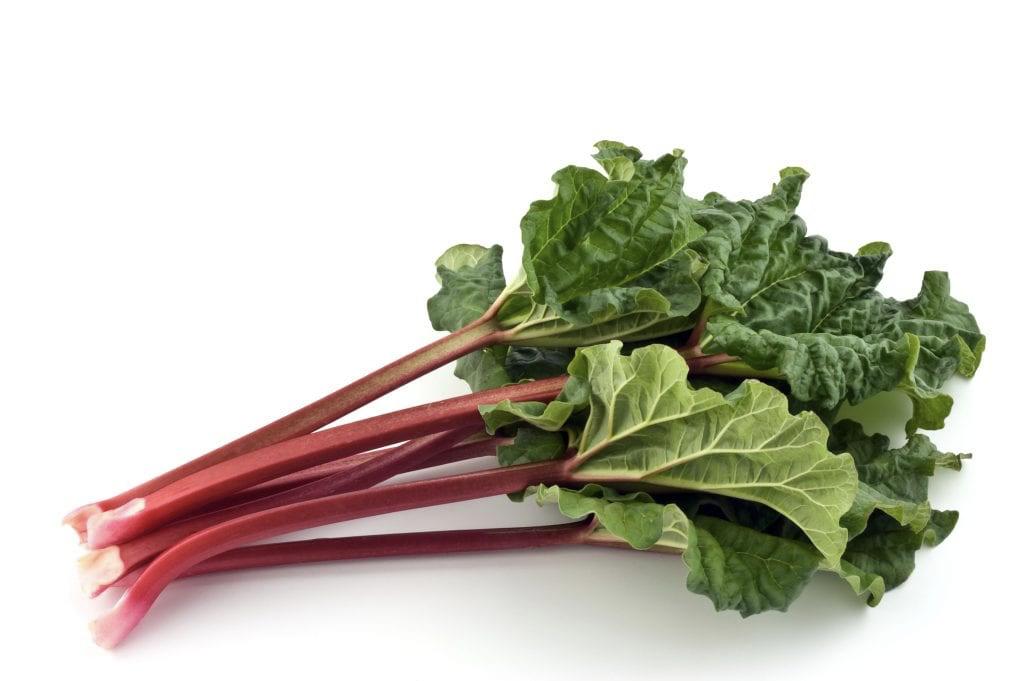
First though, a quick health review: Besides being an excellent source of Vitamin C, it’s high in dietary fiber, a good source of calcium, is low in sodium and saturated fat, and is high in Vitamin K.
To get the best nutrition from rhubarb, it’s suggested that it be baked or stewed for a long period of time. Although it is initially tart, its inherent sweetness comes alive when cooked. For instance, try cooking it with apples and oranges sprinkled with cinnamon and ginger.
Now its uses. Did you know that rhubarb was a common ingredient used in medicines and folk healing for centuries? But wait, there’s more! Consider these other proven uses:
Cleaning pots and pans: Rhubarb can clean your pots and pans (no joke!) To clean a burnt pan, chop some rhubarb into small pieces and boil it in the pot for at least 10 minutes until you get a glue-like consistency. Rinse with clean water and voilà - admire the results.
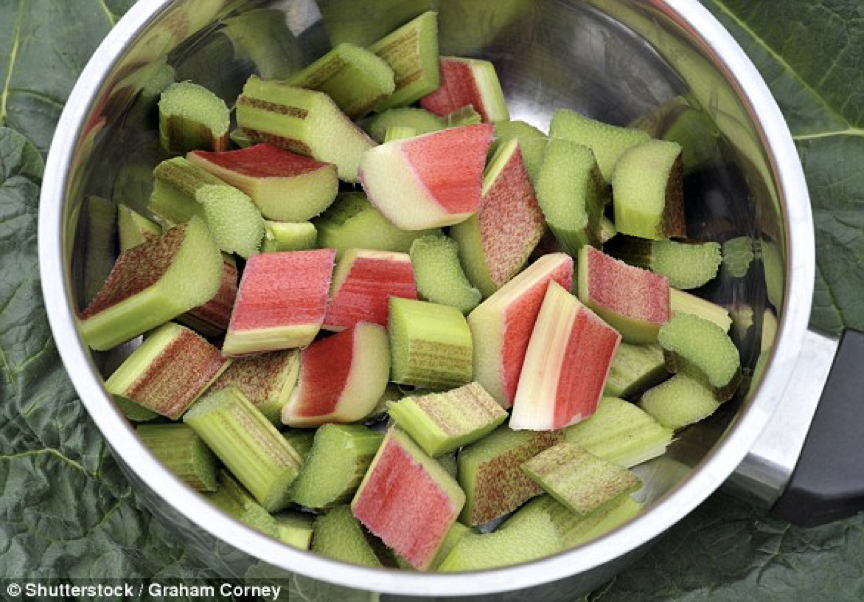
Hair Color: Rhubarb provides a fairly strong dye that can create a more golden color for those with blond or light brown hair. Simmer 3 tablespoons of rhubarb in 2 cups of water for 15 minutes, set aside overnight, and strain. Test on a few strands of hair to determine the effect, then pour through the hair for a rinse.
Insecticide: Rhubarb leaves can be used to make an effective organic insecticide for any of the leaf-eating insects (cabbage caterpillars, aphids, peach and cherry slug, for instance). Here are 2 sure-fire recipes:
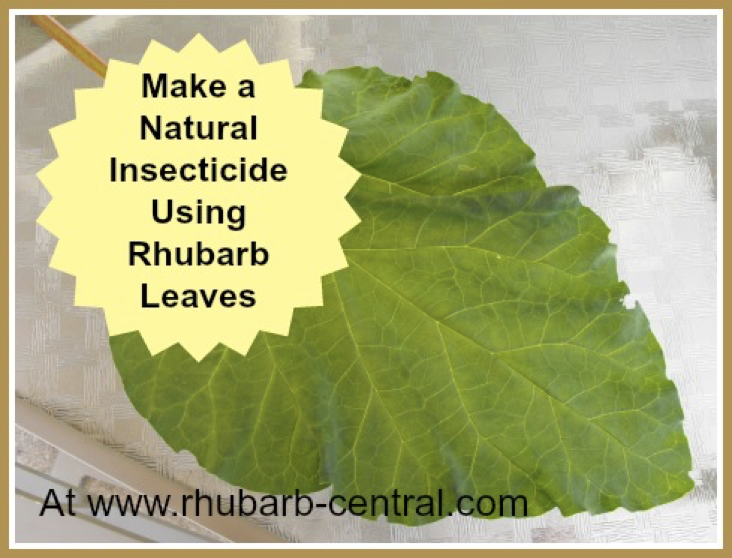
RECIPE 1. Boil a few pounds of rhubarb leaves in water for about 15 or 20 minutes, allow to cool, then strain the liquid into a suitable container. Dissolve some soap flakes in this liquid and use it to spray against aphids.
RECIPE 2. Shred 3 pounds rhubarb leaves and boil in 1 gallon of water for 30 minutes. Allow to cool and then strain. (Use old utensils if you can as rhubarb will stain most things and poison the rest.) In a small saucepan heat to boiling 2 ½ quarts water and mix in 4 ounces softened soap ends (any bits of soap left in the shower). Allow to cool (stirring regularly to make sure all the soap is dissolved). Add to the strained leaf mixture, stir vigorously, and the spray directly onto infested leaves. The unused spray can be kept for a day or two, but keep children away as it’s still quite harmful.
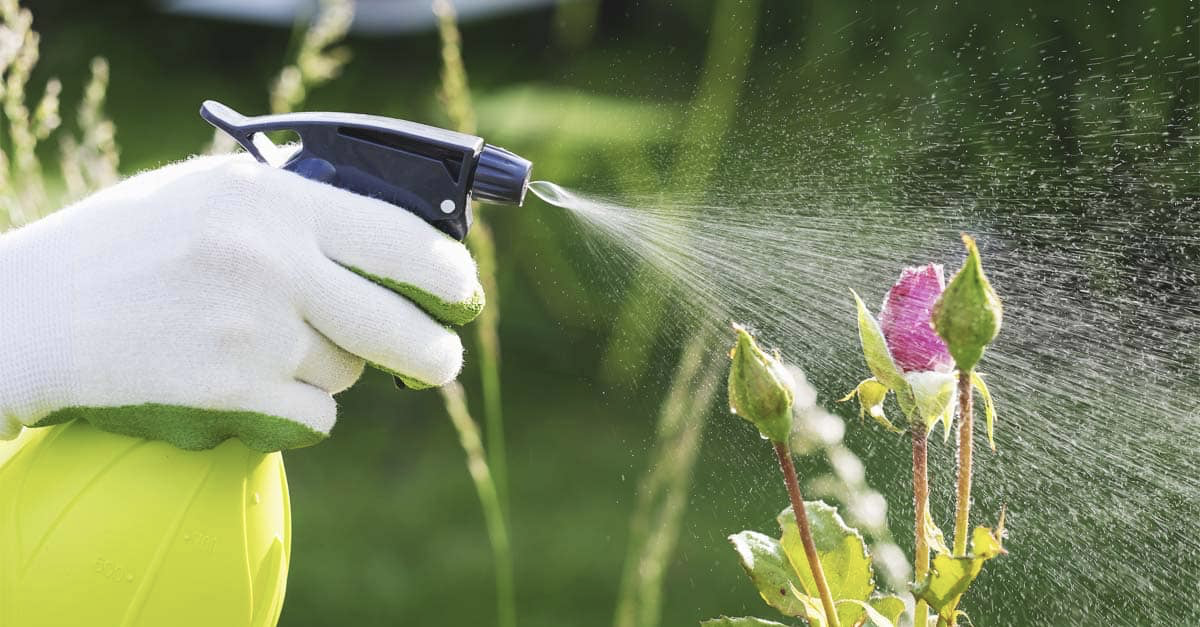
Next time you cut some rhubarb for a recipe, you can put the leaves to good use rather than just composting them (which is another great use, of course).
And speaking of rhubarb recipes, here’s one that’s easy and yummy—a real crowd pleaser that that Aunt Annie shared with us many years ago. It was a favorite way to use the rhubarb from her garden.
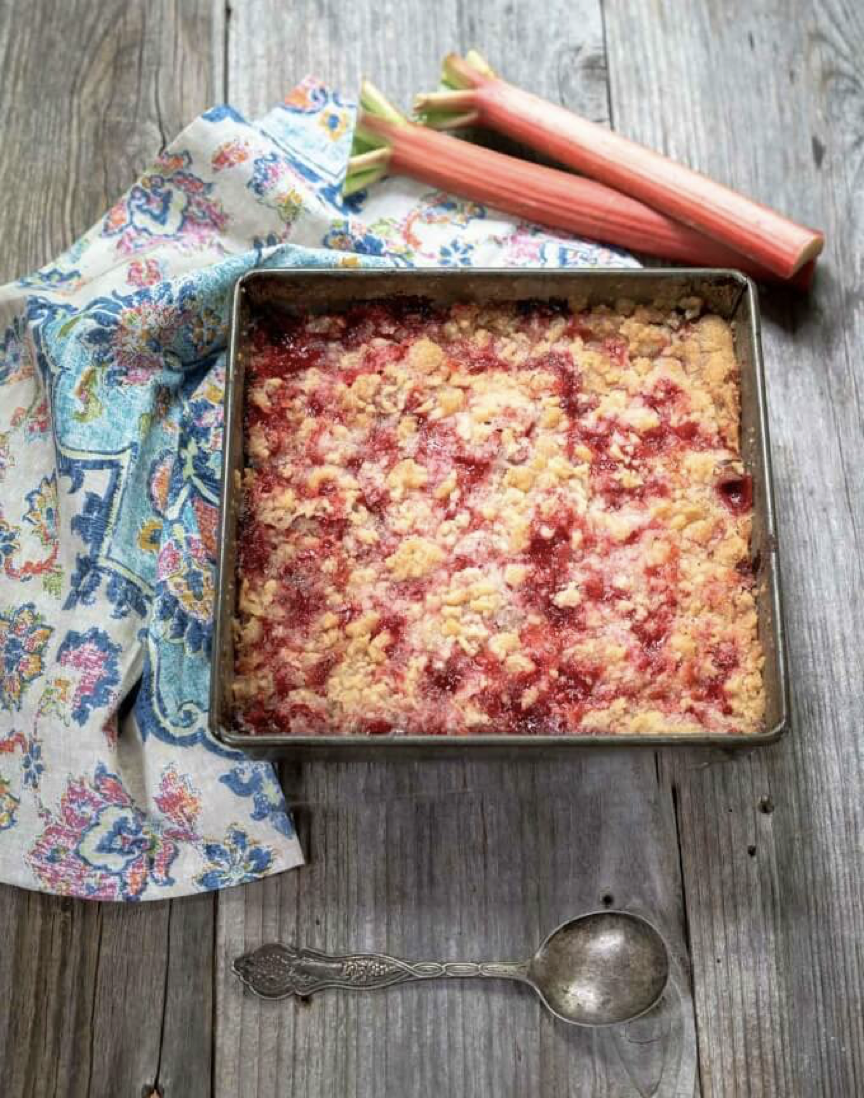
6 cups cut up rhubarb
1 1/4 cups sugar divided
2 tablespoons quick-cooking tapioca
1/4 cup melted butter
1/4 teaspoon salt
3 cups corn flakes (or other dry cereal)
Directions:
Add Recipe to Cook'n

First though, a quick health review: Besides being an excellent source of Vitamin C, it’s high in dietary fiber, a good source of calcium, is low in sodium and saturated fat, and is high in Vitamin K.
To get the best nutrition from rhubarb, it’s suggested that it be baked or stewed for a long period of time. Although it is initially tart, its inherent sweetness comes alive when cooked. For instance, try cooking it with apples and oranges sprinkled with cinnamon and ginger.
Now its uses. Did you know that rhubarb was a common ingredient used in medicines and folk healing for centuries? But wait, there’s more! Consider these other proven uses:
Cleaning pots and pans: Rhubarb can clean your pots and pans (no joke!) To clean a burnt pan, chop some rhubarb into small pieces and boil it in the pot for at least 10 minutes until you get a glue-like consistency. Rinse with clean water and voilà - admire the results.

Hair Color: Rhubarb provides a fairly strong dye that can create a more golden color for those with blond or light brown hair. Simmer 3 tablespoons of rhubarb in 2 cups of water for 15 minutes, set aside overnight, and strain. Test on a few strands of hair to determine the effect, then pour through the hair for a rinse.
Insecticide: Rhubarb leaves can be used to make an effective organic insecticide for any of the leaf-eating insects (cabbage caterpillars, aphids, peach and cherry slug, for instance). Here are 2 sure-fire recipes:

RECIPE 1. Boil a few pounds of rhubarb leaves in water for about 15 or 20 minutes, allow to cool, then strain the liquid into a suitable container. Dissolve some soap flakes in this liquid and use it to spray against aphids.
RECIPE 2. Shred 3 pounds rhubarb leaves and boil in 1 gallon of water for 30 minutes. Allow to cool and then strain. (Use old utensils if you can as rhubarb will stain most things and poison the rest.) In a small saucepan heat to boiling 2 ½ quarts water and mix in 4 ounces softened soap ends (any bits of soap left in the shower). Allow to cool (stirring regularly to make sure all the soap is dissolved). Add to the strained leaf mixture, stir vigorously, and the spray directly onto infested leaves. The unused spray can be kept for a day or two, but keep children away as it’s still quite harmful.

Next time you cut some rhubarb for a recipe, you can put the leaves to good use rather than just composting them (which is another great use, of course).
And speaking of rhubarb recipes, here’s one that’s easy and yummy—a real crowd pleaser that that Aunt Annie shared with us many years ago. It was a favorite way to use the rhubarb from her garden.

Rhubarb Ranger Dessert
Serving size: 6
Calories per serving: 228
Ingredients:
Calories per serving: 228
6 cups cut up rhubarb
1 1/4 cups sugar divided
2 tablespoons quick-cooking tapioca
1/4 cup melted butter
1/4 teaspoon salt
3 cups corn flakes (or other dry cereal)
Directions:
Combine rhubarb, ¾ C sugar and tapioca and put into shallow, 1½ qt. buttered casserole dish. Cover and bake at 375 for 30 min. Meanwhile, combine butter, remaining ½ C sugar and salt; toss with cereal. Spoon over rhubarb and continue baking, uncovered, for 15 min. or ‘til rhubarb is tender and mixture is lightly browned. Serve warm or cold with slightly sweetened whipped cream.
Recipe formatted with the Cook'n Recipe Software from DVO Enterprises.
Sources:
- www.gofreshusa.com
- www.shutterstock.com
- www.rhubarbcentral.com
- www.morningchores.com
- www.hostessatheart.com
 Alice Osborne
Alice Osborne
Weekly Newsletter Contributor since 2006
Email the author! alice@dvo.com
